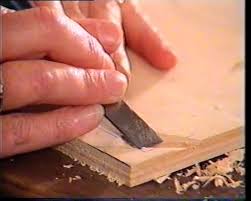The art of Printmaking
- Carol Anne Jones

- Jan 12, 2018
- 4 min read
Updated: Aug 24, 2020
Printmaking has always been one of my favourite forms of expression having first become fascinated with the process during my A Level studies when I was introduced to Lino and Screen-printing. I continued exploring its possibilities when I studied Fine Art at degree level and have worked with it on and off for some time and it’s something I’d like to come home to again for my next series.
In 2008 I was inspired by a 2 day workshop I attended run by Karen Oremus who is currently in her fourteenth year working as an Associate Professor in the College of Arts and Creative Enterprises at Zayed University in the UAE. She is responsible for the establishment and development of the first printmaking studio in Abu Dhabi. Her work merges traditional printmaking with new technologies as she explores themes and concepts surrounding the unpredictability and fragility of life from both a universal and personal perspective. Her outcomes are created through a hybrid of traditional and non-traditional printmaking techniques, mainly utilizing etching, screen-printing, digital print and photography and drawing, that incorporate various other media such as printed embroidery, animation, video and laser cutting and engraving technology. Karen is an artist who has redefined printmaking as an art form.
For much of printmaking’s history fine art prints have been a private art form, designed for connoisseurs and collectors, published in limited editions and hidden away in portfolios. The 20th century saw the development of a more public role for prints, with the adoption of affordable processes such as linocut, and editioned lithographs made for public display. Even so print-making was rarely an artist's main focus. Instead it tended to be a peripheral activity, secondary to painting or sculpture. This changed in the 1960s and 70s with the rise of print studios and encouraged artists to explore the potential of printmaking and use it to produce works which represented major breakthroughs as creative statements. Over the last 20 years prints have become more visible, and print is now a central part of many artists' activity, the equal of their output in other media, and conceived as integral or complementary to it.
In Japan though, traditional woodblock printing is still practiced. The influence of Japanese art on Western culture in the 1870s became known as Japonism and Hokusai was seen as the emblematic Japanese artist with images from his prints and books influencing many different works.
Woodblock printing is a form of relief printing using wooden plates, and is the oldest form of printmaking in the world. The method involves putting ink or paint on the block, laying a sheet of Japanese paper on that block, and then rubbing the paper with a disk covered with bamboo. At times, the process involves multiple blocks, or using different colours on different sections of the same block. Woodblocks mainly consists of two different types: one is carving on a plain-sawn woodblock, and the other on a round-sliced woodcut.
The initial step, of course, involves the use of the artist's original sketch (done on thin paper) which is first glued upside down (must be reversed) onto the flat surface of a cherry wood block. The carver then begins the tedious and very exacting task of carving (through the glued paper) along both edges of all the sketch's lines, resulting in only very thin, raised edges left standing in relief. All excess, "unwanted wood" is carved away. What remains then after many tedious and seemingly endless hours of work is known as the "key-block" which is used to print the black outlines seen in the print.
Next, by inking this "keyblock" with black ink, several black-outlined copies are printed (again onto thin papers) which after being dried are similarly glued facedown (always reversed) onto the surfaces of the additional, yet-uncarved, woodblocks. The various areas between these black lines then define the boundaries of each individual colour. Again, the carver then carves away much of the surfaces of these various woodblocks using one woodblock for each colour. Finally, after weeks and weeks of precise carving, this multiple set of woodblocks is completed, allowing the printing itself to finally begin. Prior to the actual printing of colours, each blank sheet of Japanese "washi" paper (handmade, typically of mulberry bark) must first be quickly coated by brush with a thin layer of "sizing" which is necessary to prevent the unwanted "side-bleeding" of colored pigments. Once dried, the printing can then begin.
First printed are the black outlines, using the print's "keyblock". Black pigment is mixed together with a bit of rice paste ("nori") which is then brushed onto the keyblock's face. One corner and one edge of each blank sheet of paper is then very carefully placed into and against the "kento cuts" as it is laid down onto the (face up) inked woodblock. The actual ink transfer then takes as the printer quickly rubs the backside of the paper with a flat, round, bamboo leaf-covered, handheld tool known as a "baren". This process is repeated with precision until a stack of 50 to 100 sheets are completed. After being set aside to dry, this process is then repeated again and again, using the differently carved (and differently colored) woodblocks to over-print each individual colour. Often "wider areas" of colour are additionally carefully manipulated on the surface of the inked woodblock to produce the wonderful gradations of color known as "bokashi". Finally then, often months after the process has begun, the individual print is complete. These prints are always a wonder to behold and takes years of practice to perfect. I think I will probably leave this specialist technique in the Japanese tradition to the experts!












Comments